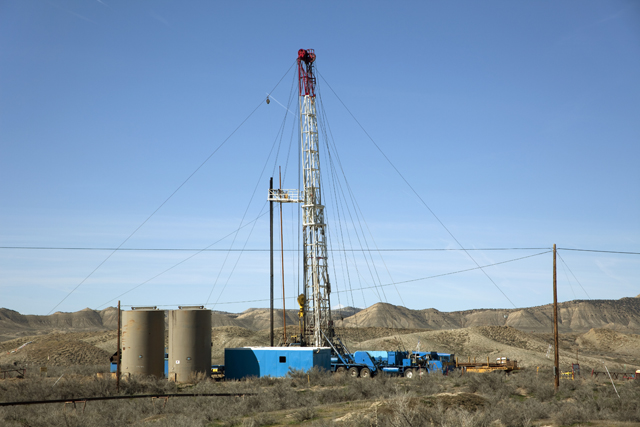10 August 2021–Earthquakes generated by controlled fluid injection at Colorado’s Rangely oil field were caused by destabilizing fault pore pressure changes, according to a new mechanistic model applied to data from the decades’ old project
The Rangely experiment, conducted from 1969 to 1973, is one of the oldest studies of recorded seismicity due to subsurface fluid injection, and is considered to be a pioneering study in the field of induced seismicity. The experiment is being revisited in light of results from studies of the significantly increased seismicity in the central United States and elsewhere due to fluid injection during oil and gas extraction.
During the Rangely experiment, water was injected cyclically into the site’s Weber sandstone, a rock reservoir located 1700 meters below the surface. By 1970, the Weber was producing about 30,000 barrels of oil per day. Data on microseismicity, stress magnitude and orientation, and reservoir pore pressure were collected before, during and after the experiment, offering a unique data set for future investigations.
In the Bulletin of the Seismological Society of America, Josimar Silva, Ruben Juanes, John Shaw, and colleagues at Harvard University and MIT took a detailed look at the small earthquakes generated by the Rangely experiment, using new modeling capabilities to examine fluid diffusion and rock poroelastic mechanisms at the site. Most earthquakes generated during the experiment were too small to be felt, with the largest at magnitude 3.1, and originated along one fault running through the field.
The researchers defined two groups of earthquakes during the experiment—an “upper cluster” close to the injection wells within the reservoir receiving the injected fluids, and a “lower cluster” outside of this injection space. They conclude from their models that upper cluster earthquakes should be considered induced by the injection, but that pore pressure diffusion caused only small changes in stress at the lower cluster such that these events are triggered.

One of the important and somewhat surprising findings from the study, said Shaw, “involves the role of the fault itself as a conduit for fluid flow.”
The model suggests that highly permeable rock fractures adjacent to the fault were necessary to create “a permeability pathway through which the fluids could actually flow from the injection site to the sources of many earthquakes,” said Shaw.
“We need to consider in all cases that fault zones are not only subject to the stresses and the fluid pressure changes that may destabilize them or produce earthquakes,” he added, “but they’re also important to understand as the conduits for fluid flow.”
Shaw said the experiment was a unique cooperation for the time between Chevron, the operator of the field, and the U.S. Geological Survey. The time was right for Shaw and colleagues to revisit the Rangely data, he said, because “we have new capability of modeling fluid flow in the subsurface, coupled with a geomechanical model to try to understand how production and injection operations affect the stability of faults.”
The area around the oil field is not tectonically active in the sense of having ongoing natural seismicity, Shaw said, but the experiment and their modeling show how “even small perturbations in the subsurface caused by human activities can actually destabilize faults that have the right orientations and the right properties.”
Shaw and his colleagues plan to apply their model to other regions that could be similarly destabilized by pore pressure changes caused by human activity, such as the Los Angeles basin, and other subsurface injection sites such as carbon sequestration or geothermal power reservoirs.
Their mechanistic model could be combined with other studies of induced earthquakes “to make us more capable of understanding these phenomena and hopefully find ways to manage them,” he said.
